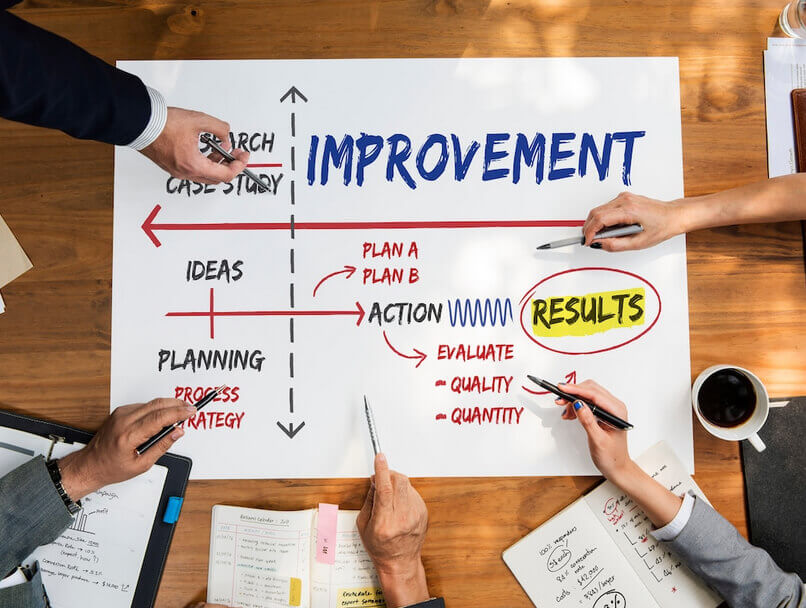
Service-based operations, from healthcare to hospitality, face the constant challenge of improving efficiency and customer satisfaction. These sectors, which focus on delivering intangible services rather than physical products, require innovative strategies to enhance performance and meet customers’ evolving expectations. The Design of Experiments (DOE) offers a powerful solution, providing a structured approach to identifying and optimizing the factors influencing service outcomes.
Businesses can systematically enhance their processes through DOE, boosting customer satisfaction and operational effectiveness. We will investigate how DOE can be a critical facilitator of innovation and quality in the service industry, emphasizing simplicity and applicability.
Key Takeaways
- Design of Experiments (DOE) offers a structured approach to identifying and optimizing factors influencing service delivery and customer satisfaction in service-based operations.
- DOE principles such as randomization, replication, and blocking are essential for conducting reliable and valid experiments in any service setting.
- Implementing DOE can enhance service quality, increase operational efficiency, improve customer satisfaction, and a competitive advantage in the marketplace.
- Mastery of DOE techniques through comprehensive training, such as the Operational Design of Experiments Course, is crucial for service industry professionals aiming to drive significant operational improvements.
Understanding Service-Based Operations

Image Source: Freepik
Service-based operations represent a significant portion of the global economy. They are characterized by their focus on delivering intangible value through interactions and experiences rather than physical goods. Unlike product-based businesses, these services are consumed as they are produced, necessitating a unique approach to their management and improvement.
This section delves into the defining characteristics of service-based operations and the challenges of managing them effectively.
Characteristics of Service-Based Operations
Four key characteristics distinguish service-based operations:
- Intangibility: Services are inherently intangible; they cannot be seen, touched, or stored. This intangibility complicates the measurement of service quality and customer satisfaction.
- Heterogeneity: Services are highly variable, as their delivery and the customer’s perception of them can vary significantly from one instance to another. This variability makes standardization and quality control challenging.
- Perishability: Unlike physical products, services cannot be stored for later use. This characteristic demands precise demand management and capacity planning.
- Simultaneity: Services are often produced and consumed simultaneously, meaning the customer is present during production. This direct interaction requires frontline employees to actively manage service delivery and customer satisfaction.
Challenges in Managing Service-Based Operations
The unique attributes of service-based operations introduce several management challenges:
- Variability in Customer Expectations: Customers may have diverse and often changing expectations, making it challenging to satisfy everyone consistently.
- Measuring Service Quality: Services’ intangible nature complicates measuring quality and performance. Traditional metrics used in manufacturing are not always applicable in a service context.
- Real-Time Adjustments: Given the simultaneity of production and consumption, issues must be addressed in real time, demanding flexible and responsive operational strategies.
- Employee Performance: The variability in employee performance can significantly affect service quality. Ensuring consistent training and motivation is crucial for maintaining service standards.
Navigating Through Challenges
To navigate these challenges, service-based operations must adopt flexible, innovative strategies to accommodate the variability inherent in service delivery. This involves:
- Implementing robust training programs for employees to ensure consistency in service delivery.
- Developing metrics and KPIs that accurately reflect service quality and customer satisfaction.
- Utilizing technology to predict customer demand and manage capacity effectively.
- Fostering a culture of continuous improvement where feedback is actively sought and used to refine service offerings.
Understanding service-based operations’ unique aspects and challenges is the first step toward implementing practical improvements. By acknowledging these foundational elements, businesses can better prepare to leverage tools like the Design of Experiments (DOE) to enhance their operational efficiency and customer satisfaction.
In the following sections, we will explore how DOE can be strategically applied to tackle the complexities of service-based operations, offering a systematic approach to process improvement and innovation.
Fundamentals of Design of Experiments (DOE)

Image Source: Freepik
The Design of Experiments (DOE) is a systematic, rigorous approach to determining the relationship between the factors affecting a process and its output. In service-based operations, DOE provides a structured method to identify which factors most significantly impact service delivery and customer satisfaction and how.
This section outlines the fundamental principles, types of experimental designs, and the importance of statistical analysis in DOE.
Key Principles of DOE
DOE is built on three foundational principles that ensure the reliability and validity of experimental results:
- Randomization: This principle involves randomly assigning conditions or treatments to experimental units to eliminate bias and ensure that the results are generalizable across different settings. Randomization helps mitigate the effect of confounding variables that could skew the results.
- Replication: Replication is repeating an experiment under identical conditions to verify the consistency of the results. In service operations, this might mean testing the same process improvement across different times or settings to ensure that observed effects are not due to random chance.
- Blocking: Blocking involves grouping experimental units that are similar in some way and is expected to affect the response to the treatment. By comparing treatments within these blocks rather than across the entire sample, researchers can control for these variables, reducing variability and enhancing the experiment’s accuracy.
Types of Experimental Designs
DOE offers various experimental designs, each suited to different types of questions and constraints:
- Factorial Designs: These designs simultaneously test two or more factors to determine their individual and interactive effects on the output. Factorial designs are especially useful in service operations for exploring how different aspects of the service process interact to affect customer satisfaction.
- Fractional Factorial Designs: Full factorial designs can become impractical when factors become large. Fractional factorial designs use a subset of the possible combinations of factors, making the experiment more manageable while providing valuable insights into the factors’ main effects and selected interactions.
- Response Surface Methods (RSM): RSMs are used to model and optimize processes when the goal is to find the optimal setting of process parameters that produce a desired outcome. This method is beneficial for fine-tuning service delivery processes to achieve peak efficiency and customer satisfaction.
Importance of Statistical Analysis in DOE
Statistical analysis plays a critical role in DOE, providing the tools to interpret experimental data accurately:
- Analysis of Variance (ANOVA): ANOVA is used to analyze the data from an experiment to determine if the differences in responses across different treatments are statistically significant. This is crucial for identifying which factors most impact service quality.
- Regression Analysis: This involves modeling the relationship between the dependent variable (e.g., customer satisfaction) and one or more independent variables (e.g., speed of service, employee behavior). Regression analysis helps in predicting how changes in process variables can affect outcomes.
- Optimization: Statistical tools enable the identification of the combination of factors that optimize the desired response. In service operations, this could mean finding the optimal staff levels or service procedures to maximize customer satisfaction while minimizing costs.
Understanding these fundamentals of DOE equips service-based operations with a robust framework for systematically investigating and improving their processes. By applying these principles and methods, businesses can make informed decisions that significantly enhance their service delivery and customer experience.
In the next section, we will explore how these concepts are applied in real-world service settings, illustrating the transformative potential of DOE in service-based operations.
Application of DOE in Service-Based Operations

Image Source: Pexels
Applying Design of Experiments (DOE) in service-based operations offers a systematic approach to enhancing process efficiency, customer satisfaction, and overall service quality. Organizations can make data-driven improvements by identifying the key variables that impact service delivery and understanding their interactions.
This section explores the practical application of DOE in service settings, including identifying key process variables, real-world examples, and implementation strategies.
Identifying Key Process Variables
The first step in applying DOE in service operations is identifying key process variables that might affect the outcome. These variables can range from employee training levels, wait times, and service customization options to environmental factors like the layout of a service facility. Organizations can pinpoint areas that require investigation using tools like brainstorming sessions with employees, customer feedback, and historical data analysis.
Real-World Examples of DOE in Service Industries
- Healthcare: Hospitals have applied DOE to reduce patient wait times and improve the scheduling of surgeries, leading to higher patient satisfaction and more efficient use of operating rooms.
- Hospitality: Hotels have used DOE to find the optimal combination of room amenities, pricing strategies, and customer service practices to enhance guest satisfaction and loyalty.
- Finance: Banks and financial institutions have implemented DOE to streamline processes such as loan approvals and customer service calls, improving efficiency and customer experience.
These examples illustrate how DOE can be tailored to address the specific challenges of different service industries, leading to significant improvements in service delivery and operational performance.
Strategies for Implementing DOE in Service Settings
Implementing DOE in service operations requires careful planning and consideration of the unique aspects of service delivery. The following strategies can facilitate a successful application of DOE:
- Engage Frontline Employees: Involving employees who directly interact with customers can provide valuable insights into the variables that affect service quality and customer satisfaction.
- Customer Participation: Encouraging customer feedback and participation in experiments can help identify what truly matters to them, ensuring that improvements align with customer expectations.
- Pilot Testing: Before rolling out changes across the entire organization, conducting pilot tests in a controlled environment can help identify potential issues and refine the approach.
Benefits of DOE in Service-Based Operations

Image Source: Pexels
Implementing DOE in service-based operations brings numerous benefits, from enhanced service quality to improved efficiency and competitive advantage. This section highlights the key advantages of adopting DOE as a part of the continuous improvement strategy in service industries.
Enhanced Service Quality
By systematically investigating the factors influencing service delivery, organizations can make targeted improvements directly impacting quality. This leads to more consistent, reliable service experiences that meet or exceed customer expectations.
Increased Efficiency and Cost-Effectiveness
DOE helps identify the most efficient ways to deliver services, optimizing resource use and reducing waste. This improves operational efficiency and contributes to cost savings, which can be passed on to customers or reinvested in the business.
Improved Customer Satisfaction
As identified through DOE, tailoring services to meet customer needs and preferences enhances customer satisfaction. Satisfied customers are likelier to return and recommend the service to others, driving growth and profitability.
Competitive Advantage
Organizations that continuously improve their services through DOE differentiate themselves in the market. This competitive edge comes from their ability to offer superior service quality, innovate in service delivery, and respond effectively to customer needs.
The application of DOE in service-based operations offers a robust framework for understanding and improving the complex processes that underpin service delivery. By embracing this systematic approach, service organizations can achieve significant gains in quality, efficiency, and customer satisfaction, securing their position in a competitive marketplace.
As we move forward, the adoption of DOE in service industries is not just a tool for problem-solving; it’s a strategic imperative for sustainable growth and innovation.
Conclusion
Adopting the Design of Experiments (DOE) in service-based operations is a transformative strategy that drives efficiency, enhances customer satisfaction, and secures a competitive edge. DOE empowers organizations to dissect and optimize the intricate processes at the heart of service delivery, fostering an environment of continuous improvement and innovation. Mastery of DOE principles and techniques is essential for those committed to elevating service standards and achieving operational excellence.
Elevate your service operations with the Operational Design of Experiments Course from Air Academy Associates. This course offers the expertise and insights needed to effectively implement DOE, ensuring your organization stands out in the competitive service industry landscape.
Enroll in the Operational Design of Experiments Course today to unlock your business’s potential through DOE. Begin your journey toward operational excellence and redefine what it means to deliver outstanding service.


